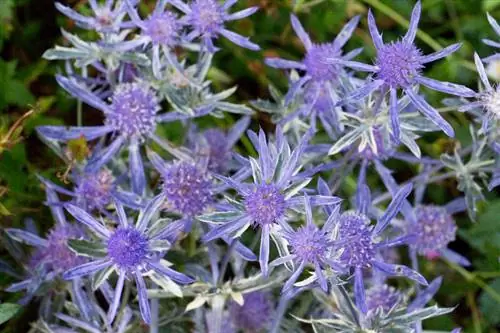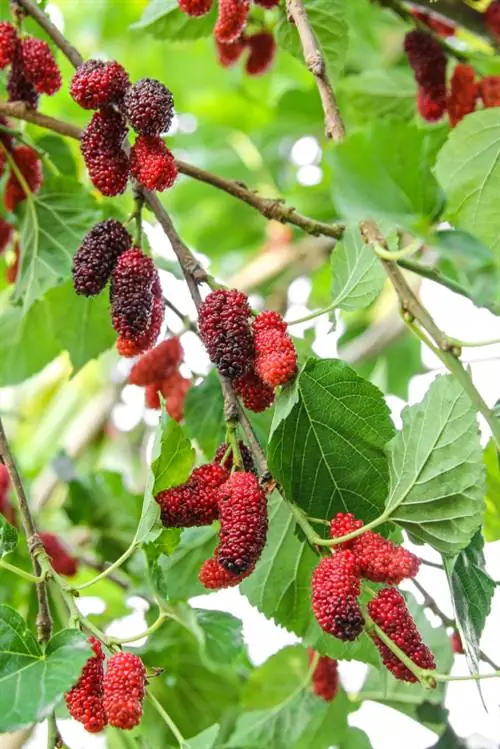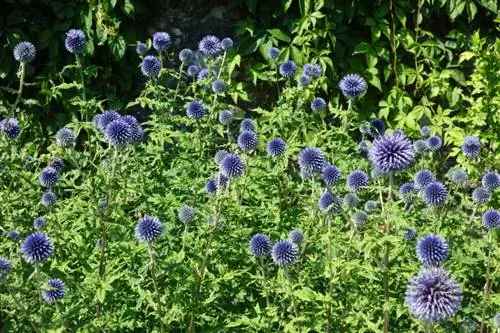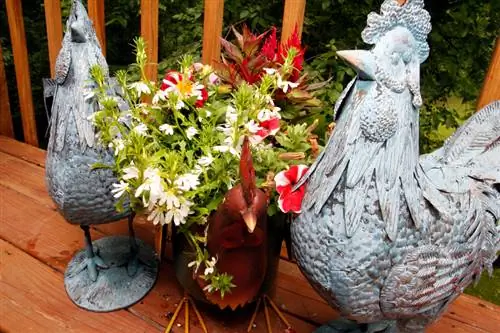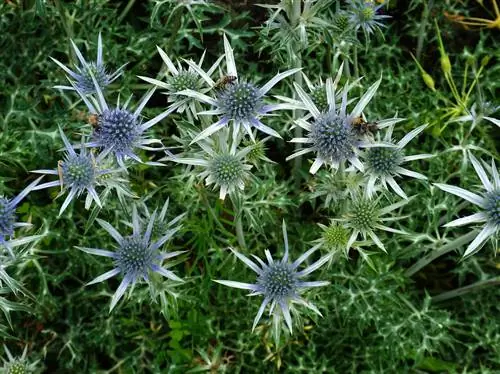- Author admin [email protected].
- Public 2023-12-16 16:46.
- Last modified 2025-01-23 11:20.
The noble thistle is a genus of plants that includes both the Alpine man's litter and the beach thistle. The appearance of these plants is as different as their habitats, but they also have some things in common.
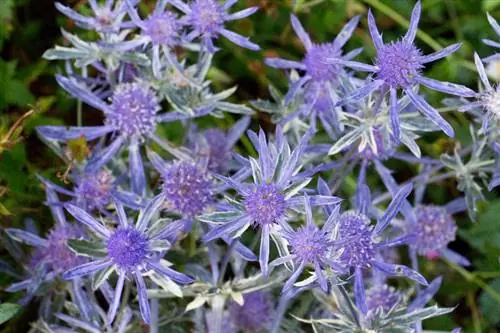
How do you care for a sweet thistle?
Caring for sweet thistle includes a location in full sun, permeable and rather dry soil, sporadic watering, avoiding waterlogging and not adding fertilizer. It is hardy, easy to care for, robust and can be propagated by seeds, division or root cuttings.
Planting the sweet thistle
The beach thistle is a protected plant that prefers to grow in the dunes. Man litter, on the other hand, is often cultivated as a garden plant. It prefers a well-drained, calcareous and normal to nutrient-rich soil and likes to be in full sun. However, it doesn't tolerate wind or waterlogging particularly well.
Man litter, depending on the species, grows to a height of 30 to 80 cm and blooms beautifully in different shades of blue. This is not only an attractive sight but an excellent source of food for bees and other insects.
So that the sweet thistle is shown to its best advantage, do not place the individual plants too close to each other. A distance of around 30 to 40 cm between the thistles is recommended. Man litter can also be combined well with other plants, such as feather grass. Low-growing species are ideal for planting in a rock garden.
Water and fertilize the sweet thistle
The sweet thistle generally tolerates drought better than too much moisture. Only in the first few weeks after planting should it be watered regularly in the morning or evening so that it grows well. Later, sporadic watering is sufficient. The soil may dry out slightly from time to time, but should not really dry out. A noble thistle does not normally need fertilizer.
Propagate the sweet thistle
Actually, you don't have to propagate the sweet thistle at all, it does that all by itself through self-sowing. Leave the wilted inflorescences on the plant and the ripe seeds will fall to the ground. If the conditions are good, the young plants will grow there next year. However, you can also sow the seeds specifically or propagate the thistle by division or with the help of root cuttings.
The most important things in brief:
- Location: full sun
- Soil: permeable and rather dry
- hardy
- easy care
- very robust
- Flowering time: June to October depending on the species
- good bee pasture
- Avoid waterlogging at all costs
- Propagation by seeds, division or root cuttings
Tip
The sweet thistle is hardy and does not require any special protection during this time. But it is an attractive eye-catcher.

